Canadian artist Aganetha Dyck knows honeybees not just as pollinators that ensure the rest of the world has food on the table, but as architects and designers who build these incredible honeycomb sculptures.
While looking for wax in Manitoba years ago, Dyck came across a beekeeper who works with bees to make honeycomb signs. The pieces were so detailed, so legible, and so incredible, she decided to clear her studio and start working with bees.
Before I proceed, know that the bees are willing contributors to this ongoing art project. They are free to come and go into special apiaries filled with all kinds of human artifacts, such as porcelain figurines, clothing and even sporting equipment.
Dyck and her team simply create an environment that they hope is conducive for the bees, and then they come in and build the most extraordinary pieces, which are remarkably strong.
Related: Lebanon’s bees are freezing to death
An award winning artist born in Manitoba in 1937, Dyck says she loves working with bees. Not only is she fascinated by the interspecies communication, but they are amazing creatures, she says, which are warm and fuzzy and make such a “nice sound.”
In a video made by the Confederation Center of the Arts, Dyck explains that she is interested in the power of the small versus the power of the gigantic.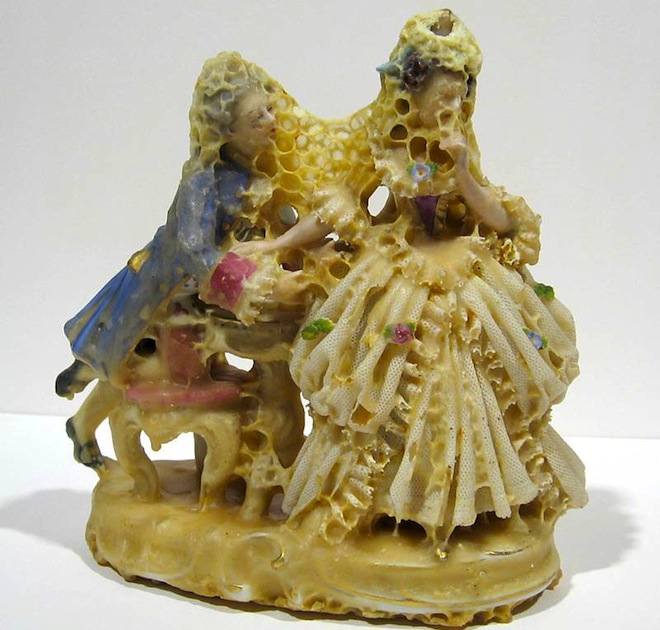
And bees, although they are individually small and their global populations have plummeted in recent years largely as a result of human expansion and agricultural practice, have incredible power. (See what a Whole Foods market would look like if we had no bees.)
“The power of the honeybee,” she says, “really is to keep the world population alive.”
All photos courtesy Peter Dyck and William Eakin.

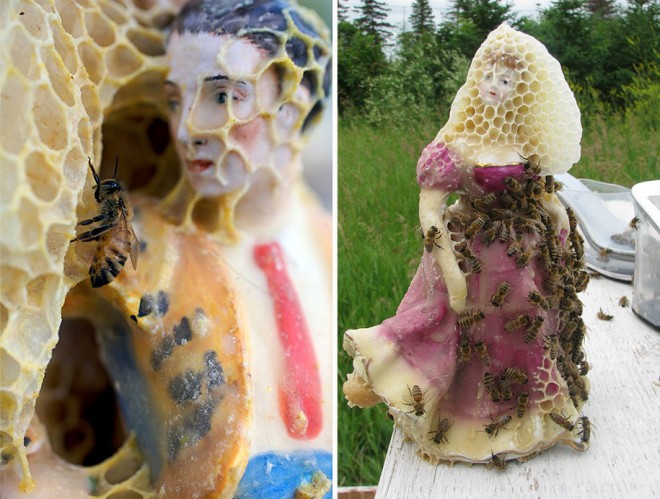
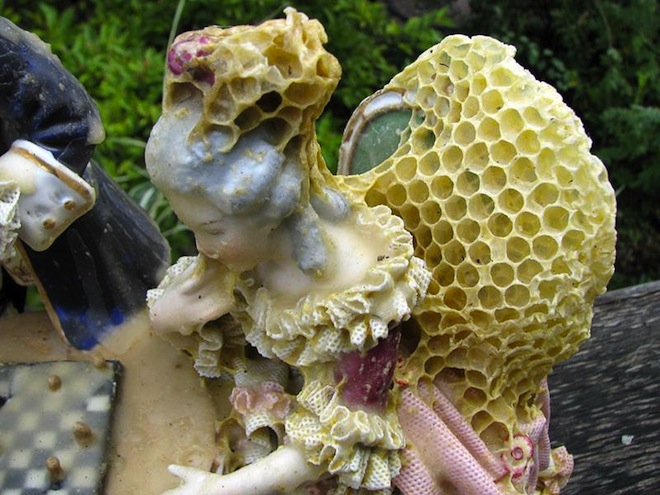
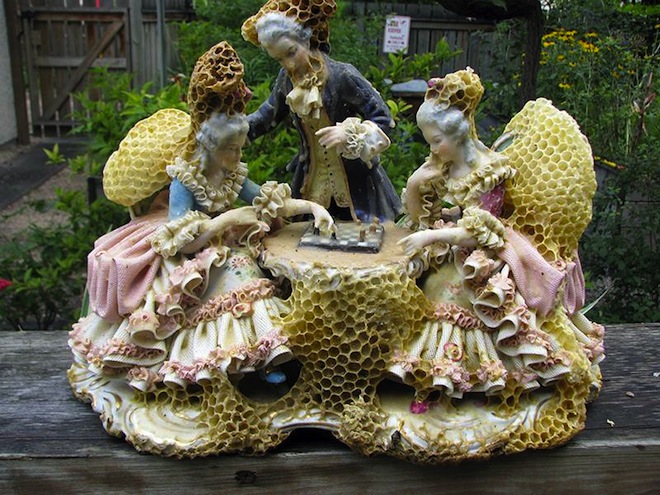
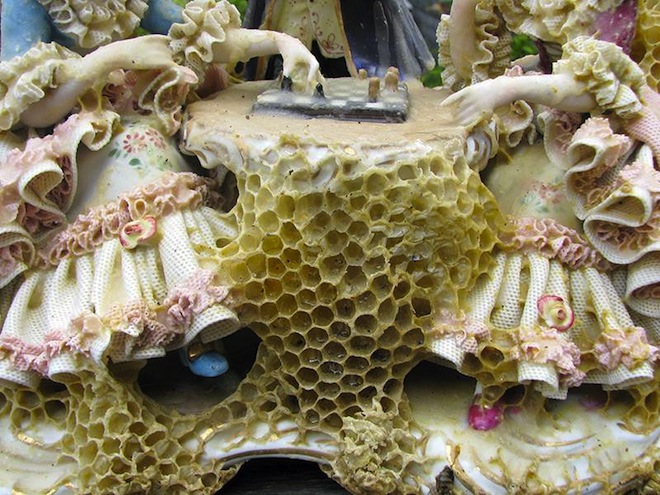

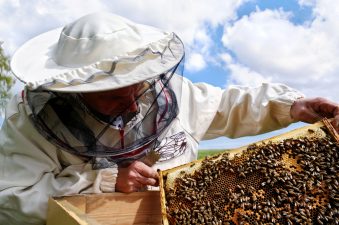
![Open source prefab bee hive helps the masses protect our pollinators [video] Open source prefab bee hive helps the masses protect our pollinators [video]](https://www.greenprophet.com/wp-content/uploads/Open-Tech-Forever-Prefab-Bee-Hives-370x279-298x225.jpg)